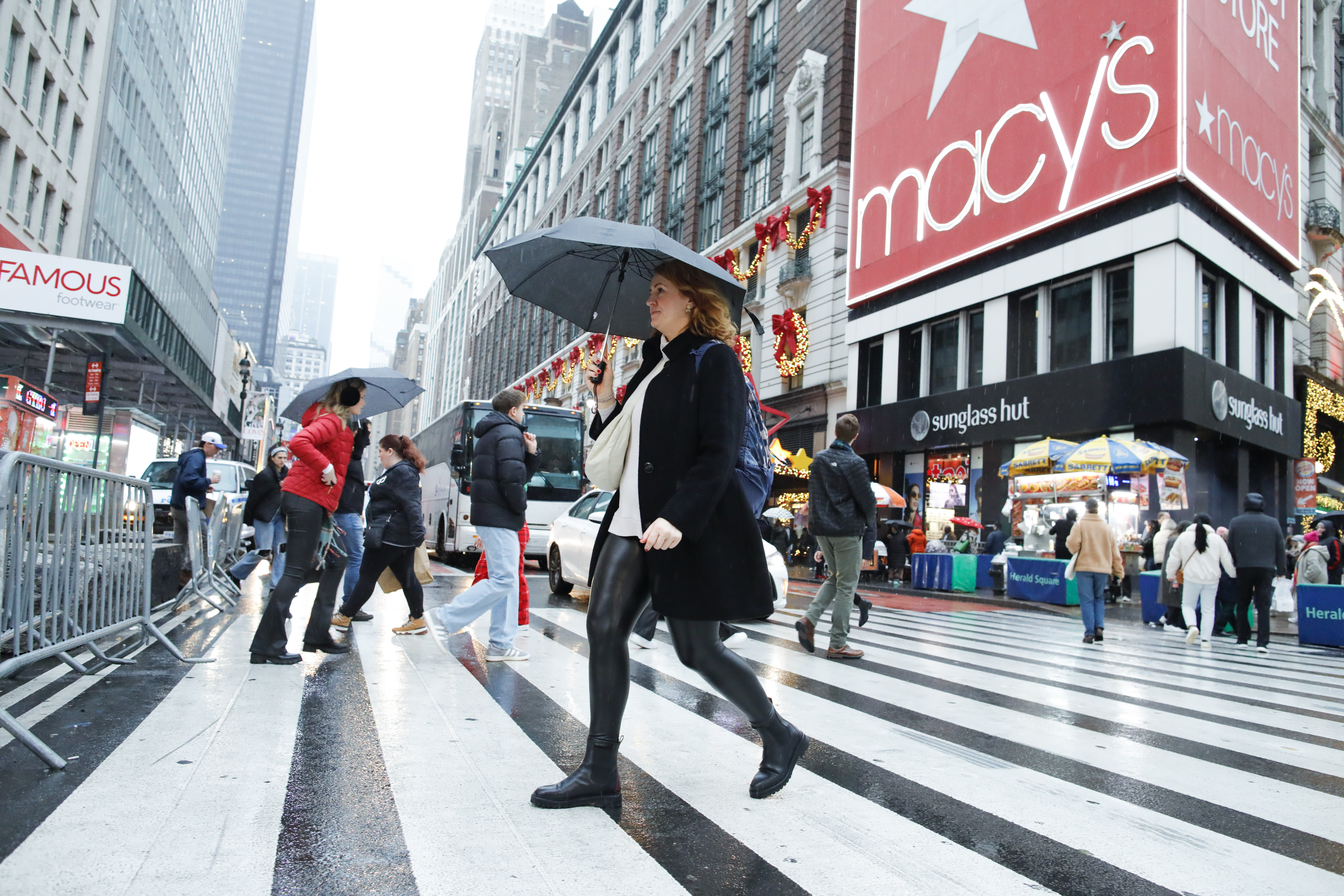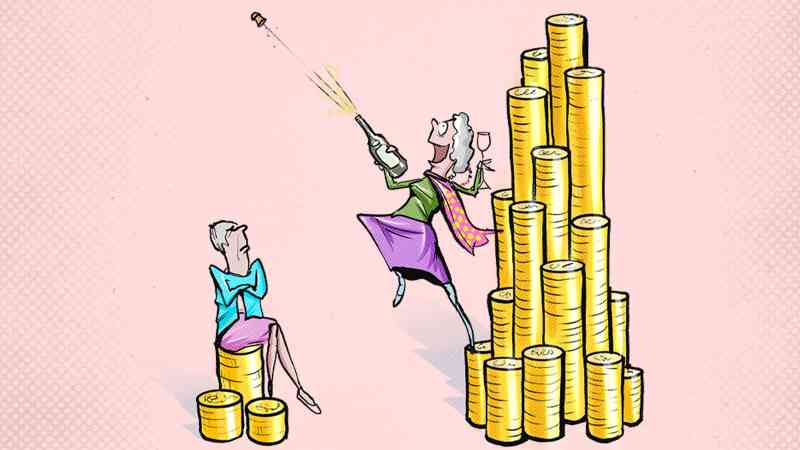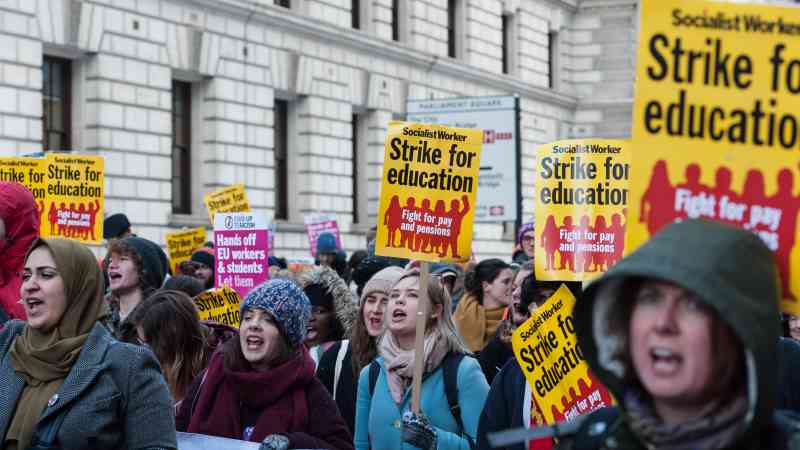America’s all-powerful consumers are under pressure
They have been among the heroes of America’s recent economic performance, branded “unstoppable” for their resilience in the face of higher borrowing costs and inflation since the pandemic. Yet the power of consumers in the United States may not be all that it seems. Alarm bells are ringing on Wall Street.
Recent earnings reports published by some of America’s biggest companies have prompted questions about the spending power of lower and middle-income workers as they run out of lockdown savings and cut back on non-essential purchases. Travel companies including Airbnb and Marriott International have warned of a slowdown in leisure trips in the US during the rest of the year as people wait longer to book holidays. Walt Disney has noted slowing demand at its American theme parks, which it thinks could continue into next year. And retailers and restaurant operators from Nike to McDonald’s say that their customers are spending more carefully.
“Middle-income, lower-income households are becoming even more cautious than others,” Kathy Bostjancic, chief economist at Nationwide Mutual, an insurer, said. “Those are the households that have been hurt the most by high prices. Even though the inflation rate is slowing for many categories, especially in services, the price level hasn’t come down and people have increasingly maxed out on their credit cards.”

On Tuesday, Brian Chesky, the chief executive of Airbnb, said that there were “some signs of slowing demand from US guests”. Ellie Mertz, chief financial officer at the rental accommodation platform, said that people were “gravitating” towards larger properties advertised on Airbnb, because “on a per-guest basis, they can be quite affordable and, frankly, more affordable than a hotel”.
In this light, it’s not surprising that hotels are reporting falling demand from American travellers, with Marriott lowering its forecast for growth in room revenue in 2024 and Hilton Worldwide questioning the strength of the US consumer. “They have less available, less disposable income and [less] capacity to do anything, including travel,” Christopher Nassetta, its chief executive, said this week. Hilton Worldwide went so far as to suggest that growth in leisure travel would be “very, very low”.
And if there are fewer hotel guests, that indicates that there are fewer travellers per se. Sure enough, Delta Airlines has warned that domestic carriers are struggling to fill flights in the summer travel season.
Restaurants are also feeling the squeeze. At McDonald’s, same-store sales in the US decreased by 0.7 per cent in the last quarter, the first quarterly drop since 2020. Starbucks, the coffee chain that counts America as its biggest market, reported a 2 per cent decline in US same-store sales in the three months to the end of June, driven by a 6 per cent decline in comparable transactions.

“We’ve continued to face a more cautious consumer spending and intensified competition,” Laxman Narasimhan, the chief executive of Starbucks, said. “In the past year, unprecedented store expansion and a mass segment price war at the expense of comp and profitability have also caused significant disruptions to the operating environment.”
Amid that “price war” to try and retain customers, Papa Johns, the pizza chain, which reported a 3.6 per cent decline in comparable sales in North America in the last quarter, is shifting its strategy from focusing on premium products to emphasising value.
“In this current economic cycle, consumers have become more deliberate in managing their overall ticket and are showing a preference for brands that are offering compelling value,” Ravi Thanawala, Papa Johns’ chief financial officer, said. “While we know we offer an attractive value for our customers, our marketing and innovation to the efforts have primarily focused on premium product offer things at premium price points. As a result, our price value perception is not as strong as it should be in this unique environment.”
Attention among economists is turning, therefore, to higher-income households and even here the outlook can best be described as mixed. Ecommerce sales at Ralph Lauren’s North American business fell by 4 per cent in the last quarter, while same-store sales grew by only 1 per cent. Hermès, maker of the famous Birkin bag, has reported 13 per cent sales growth in America in the first half of the year.

According to researchers at William Blair, an investment bank, the US is seeing a return of the “bifurcation of the consumer. The lower-income cohort is once again falling behind after a levelling-up period in the few years following the pandemic. Meanwhile, the middle and upper-income cohorts are still holding up quite well, with strong balance sheets and limited debt.”
The chief executive of one clothing retailer company told William Blair’s researchers that there was a fight for the “discretionary dollar” among consumers who were living “paycheck-to-paycheck”.
“It’s tough out there,” he said. “I think the thing is that the biggest, the most acute pain that’s been suffered across the consumer right now in the US [is] the people who have never even thought about buying a Patagonia jacket in their life, right? I think these are folks for whom apparel is very discretionary and they’re shopping at Goodwill [thrift stores]. Or they’re not shopping at all.”
America’s biggest banks agree that the lowest-income households are struggling the most. Mark Mason, chief financial officer at Citigroup, said after the bank’s latest earnings announcement that “while we continue to see an overall resilient US consumer, we also continue to see a divergence in performance and behaviour across Fico [Fair Isaac Corporation credit score rating] and income band. When we look across our consumer clients, only the highest-income quartile has more savings than they did at the beginning of 2019.”
Consumers’ caution is expected to continue after the stock market volatility of the past week. “Upper-income households may think twice now about making very large purchases or going on expensive trips because [of] this uncertainty,” Bostjancic said. “I think the overall backdrop for the consumer has really changed versus a year ago and I would expect the consumer to continue to be a lot more frugal going forward.”
The latest economic numbers paint a downbeat picture of America’s consumer market (Jack Barnett writes). The University of Michigan confidence index, the most closely watched sentiment research, has been permanently lower since the pandemic, with its latest reading being a sluggish 66.4.
Consumer spending was flat in June, home purchases slumped by 5.4 per cent and sales at car dealerships fell by 2.3 per cent.
Anxiety seemingly was justified by the latest official jobs data. This showed that the American economy added 114,000 jobs in July, well below Wall Street analysts’ forecasts, contributing to a global stock market rout at the beginning of this week. The figures prompted several large investment banks to warn that the US economy was heading for a downturn. JP Morgan lifted its probability estimate that the world’s largest economy would enter a recession to 45 per cent.
Yet on a corporate level the latest round of earnings reports from the largest consumer companies in the United States suggested that, rather than trading down to the cheapest offerings, consumers are switching up. For example, rather than eating out, consumers are spending more on higher-end fast-food. Chipotle, which offers Mexican meals for about $10, said its sales had jumped by 18 per cent. McDonald’s, meanwhile, suffered a 1 per cent drop in like-for-like sales.
The deep-seated perception that the US economy is underperforming has implications for the presidential election in November. President Biden, who has abandoned his re-election campaign and has endorsed Kamala Harris, his vice-president, to succeed him as the Democratic candidate for presidency, suffered in the polls because consumers saw him as a poor steward for the economy, despite economic output, as measured by gross domestic product, accelerating by 2.8 per cent year-on-year in the latest quarter.
A weaker US economy would have a ripple effect. Consumers in Britain, France, Germany and elsewhere are fearful that a similar fate will afflict their countries, potentially pushing spending lower, saving higher and triggering unemployment concerns. Consumption is already weak in many of these economies, holding back growth.
To revive economic activity, the US Federal Reserve could cut interest rates sharply. After the global market rout this week, some even predicted that the central bank would implement an emergency quarter-point rate cut before its next meeting on September 18. Goldman Sachs believes that the chances of a 50-basis-point reduction in rates, from the 23-year high of 5.25 per cent to 5.5 per cent, have mounted.
According to Simon French, head of research at Panmure Liberum, the broker: “While there are certainly signs of a loss of economic momentum, the firmest conclusion we can draw is that the US economy has moderated, but the case for a painful output correction is incomplete. Heading into the US elections, it seems incongruous that incumbent policymakers will do anything other than attempt to support an acceleration in economic activity.”






